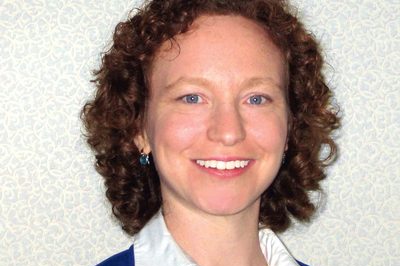Amid all the talk of potential progress for LGBT rights under President Obama, one opportunity has made few headlines: the prospect of more LGBT-inclusive children’s programming on public television. Talk with almost any LGBT parent and she or he will bemoan the dearth of LGBT families in children’s media. There is a clear need — and a new chance.
Commercial children’s programming could, of course, be more LGBT-inclusive as well. So far, however, public television has made the only move in this direction, albeit a controversial one. In the 2005 “Sugartime!” episode of PBS Kids’ “Postcards from Buster,” produced by Boston’s WGBH, rabbit Buster visits a Vermont maple-sugar farm owned by two lesbian moms. Buster’s one comment on their family structure was, “That’s a lot of moms!”
Nevertheless, U.S. Secretary of Education Margaret Spellings denounced the episode and asked the producers to return all federal funding. The conservative American Family Association launched a campaign to support her decision.
PBS pulled the episode. WGBH aired it, however, and offered it independently to PBS stations. Fifty-seven stations — representing more than half of PBS viewers — chose to broadcast it. Producer Jeanne Jordan told the New York Times, however, that the controversy made it difficult to find funds for a second season.
In contrast, the new secretary of education, Arne Duncan, has garnered praise from PFLAG’s communications director Steve Ralls (Huffington Post, Dec. 18, 2008). As head of the Chicago Public Schools, Ralls says, Duncan was well aware of the need to combat homophobic bullying and harassment, and was a strong supporter of safe-schools initiatives. One imagines Duncan would not take action like Spellings.
To date, however, other than the one “Buster” episode, we have to scrounge to find even the merest hint of LGBT families on PBS Kids. Out lesbian moms like singer Melissa Etheridge and chef Cat Cora have been guests on early-reading show “Between the Lions,” also produced by WGBH, although there was no mention of their orientation or family structure.
Other LGBT family connections are even vaguer. Out lesbian Maile Flanagan has won a Daytime Emmy for voicing protagonist Piggley Winks on “Jakers!” but few know the name behind the character. Alan Muraoka of “Sesame Street” (who plays the proprietor of Hooper’s Store) has entertained LGBT families on the R Family cruises. On “Curious George,” The Man in the Yellow Hat acts like a single dad to the eponymous monkey. He is never shown dating and could be gay for all we know (assuming we ignore the 2006 movie, in which he falls in love with the character voiced by Drew Barrymore).
The time is ripe for a public-television children’s show to include LGBT families, and the possibilities are many, even without the need to create a new series. “Mama Mirabelle’s Home Movies,” which introduces preschoolers to the natural world, could show a male penguin pair raising chicks, given the several documented real-life examples. “Reading Rainbow” could select the recent “Uncle Bobby’s Wedding” as an episode’s featured book. The tale of a little girl guinea pig who worries that her uncle won’t have time for her after he marries his boyfriend offers the perfect way to portray same-sex couples and also to discuss the universal theme of children trying to figure out their own relationships with the adults in their lives.
Perhaps “Sesame Street” could have two gay Muppet monsters bring their child to a playdate with character Gina the Veterinarian’s son, adopted from Guatemala in a 2006 episode. The episode was notable not only for showing an international adoption, but also for portraying an intentionally single mom. That in itself shows progress in acceptance of diverse families since 1992, when then-Vice President Dan Quayle railed against Candice Bergen’s portrayal of single mom Murphy Brown.
“Sesame Street” has indeed always led the pack in tackling issues of acceptance and diversity, including race, language and physical ability. However, the program has shied away from overtly LGBT characters. (Bert and Ernie are still deep in the closet, despite the rumors that persist.) In the episode where Gina adopts her child, they come as close as they ever have to acknowledging our families with the song “Doing the Family Thing”: “Any group of people/Living together/And loving each other/Are doing the family thing … A family can be/What it wants to be/’Cause there’s all different leaves/On the family tree/And there’s all different types/Of families.” In between those inclusive verses are examples of different types of families. They don’t include ones with LGBT parents, but it wouldn’t be a large step to add them to a new version.
Aside from federal funding, though, money from private foundations and public corporations also helps support public television. Some might pull their support rather than back LGBT inclusion. The national corporate sponsor for “Between the Lions,” for example, is Chick-fil-A, a family-owned fast-food chain whose founder and CEO has been honored by the ultra-conservative group Focus on the Family.
Producers must therefore make a point of reaching out to open-minded foundations as well as corporations like Subaru and Campbell Soup Company, which have already targeted LGBT families through other media. That, in combination with a tolerant federal administration, could set the stage for showing children with LGBT parents positive representations of families like their own.
The impact would be greater than just our children’s improved self-esteem, though. LGBT-inclusive shows would give all children a truer and more complete view of modern families, and could contribute to the reduction of homophobic bullying and harassment in schools.
Children’s public television is synonymous with educational TV. Isn’t preparing children to understand their society and respect fellow citizens an important part of that? Which shows are up to the challenge?
Dana Rudolph is the founder and publisher of Mombian (www.mombian.com), a blog and resource directory for LGBT parents.
